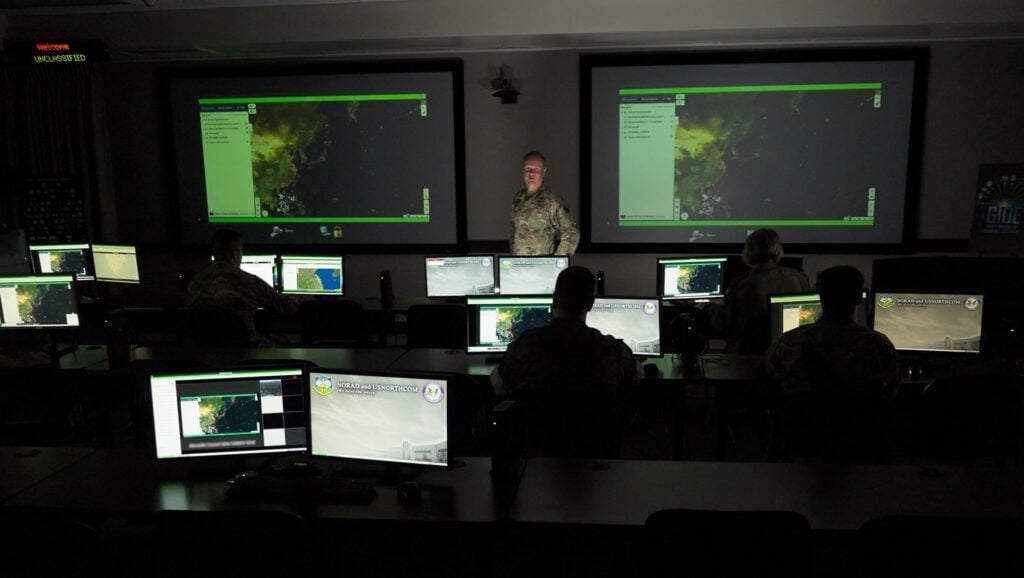THERESA HITCHENS

WASHINGTON: Combatant Command officials remain worried about whether the Defense Department will truly be able to create a Joint All Domain Command and Control (JADC2) network to manage future, rapid-paced battles against China and Russia, given that the military services each continue to focus on building their own internal capabilities.
“One of the challenges that I see with JADC2 is: is it really joint? Or is it SADC2 — in other words, is it really just a service all domain command and control?” quipped George Ka’iliwai, director of requirements and resources (J8), at Indo-Pacific Command (INDOPACOM) headquarters.
“At least from my perspective, what I see is a lot of the services who are working very hard within their service centric silos, doing some really tremendous things, but they are being done separately,” he told a webinar sponsored by the Potomac Officers Club today.
“I think the biggest challenge, having kind of lived in the JADC2 foxhole for the last two years or so at US NORTHCOM trying to build these capabilities, is first, generating a shared joint vision … not just for a service but for the whole department, generating really a shared joint vision,” echoed Col. Matt Strohmeyer, who now is an International Security Program Military Fellow at the Center for Strategic and International Studies.
“And when I say that, I mean that we’ve got a lot of organizations, and a lot of different agencies, a lot of services that are doing outstanding work to try to build out JADC2-like capabilities inside their service, or trying to build out those capabilities for a specific mission set,” Strohmeyer explained. “But we often don’t have them trying to do things across the entire joint force, because there’s not necessarily incentive structures there for them to do that.”
Stohmeyer — call sign is Nomad — formerly served as NORTHCOM’s J8 head and was heavily involved in the command’s high-priority Global Information Dominance Experiments to rapidly bring JADC2-related artificial intelligence/machine learning software tools to speed decision-making into the hands of military commanders. There have been three GIDEs up to now, the last one held in July.
Each of the military departments has been working to develop capabilities to revamp and modernize their various, and often incompatible, C2 networks to support All Domain Operations — the central tenet of the Pentagon’s new Joint Warfighting Concept. The Air Force and Space Force have the Advanced Battle Management System (ABMS), the Army has Project Convergence, and the Navy has Project Overmatch.
“The question is well how are all of these silos of excellence really going to connect?,” elaborated Ka’iliwai, who goes by the moniker Dr. K. “How are they really going to be federated as a complete system? And I think the jury’s still out on that.”
Further, he questioned whether military leaders have truly developed a workable JADC2 concept of operations for linking all sensors to all shooters; that is, how decisions to do things like coordinate so-called joint fires (attacks on targets) in near real-time will be made.
“The department is is really coming through and delivering some long range weapons that will stress that command and control, and certainly we have to be able to do this all in a contested environment, as well as ensure that we had an information advantage every step of the way,” Ka’iliwia said.
To that end, he noted that INDOPACOM has been working closely with the Defense Advanced Research Projects Agency (DARPA) to create a tool called Assault Breaker II, or ABII, that is designed to create “the common data layer and the integration that we need across the services in order to do the command and control that we need.”
Assault Breaker II is a son of DARPA’s original Cold War-era Assault Breaker program.
“In the same way that the original Assault Breaker program was a concept for stunting the enemy’s advances early on during a conflict, ABII is designed to respond within a few hours to give an adversary pause and allow more traditional forces to flow into the area of operations,” explains a 2018 report from the Defense Science Board.
Ka’iliwai further said that INDOPACOM “hopes to be the focus” of the next GIDE, GIDE 4, that is being planned for this December.
No comments:
Post a Comment